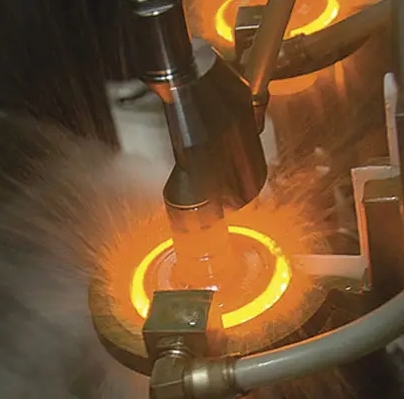- 29
- Jun
Technical requirements for induction heat treated parts of high frequency quenching equipment
Technical requirements for induction heat treated parts of ከፍተኛ ድግግሞሽ ማጥፊያ መሣሪያዎች
1. The hardness of induction hardened parts
After induction hardening of steel, the obtained surface hardness value has a great relationship with the carbon content of the steel. Taking No. 45 steel as an example, the average HRC of the hardness achieved after induction hardening is 58.5, and the average HRC of the 40 steel is 55.5.
2. Hardening zone of induction hardened parts
The hardened area of induction hardened parts is the range of the hardened area. Due to the particularity of induction heating, in order to avoid some quenching waste, the following should generally be considered for the quenching area:
For the quenched surface of the cylinder, a transition zone should be left at the end. The end of the cylindrical shaft often has a chamfered structure. This end should leave a 3-5mm non-quenched area, which generally does not affect the performance of the quenched section. Hardened or incompletely hardened transitions.
The hardened area should have a clear tolerance range. The induction hardened area should have a tolerance range just like the unwillingness of machining. If the conditions of use permit, this tolerance range can be appropriately larger.
3. Depth of hardened layer of induction hardened parts
Now induction hardened parts are determined according to the international standard ISO3754 and the national standard GB/T5617-2005, and the effective hardened layer depth is determined by measuring the hardness of the section of the part.

